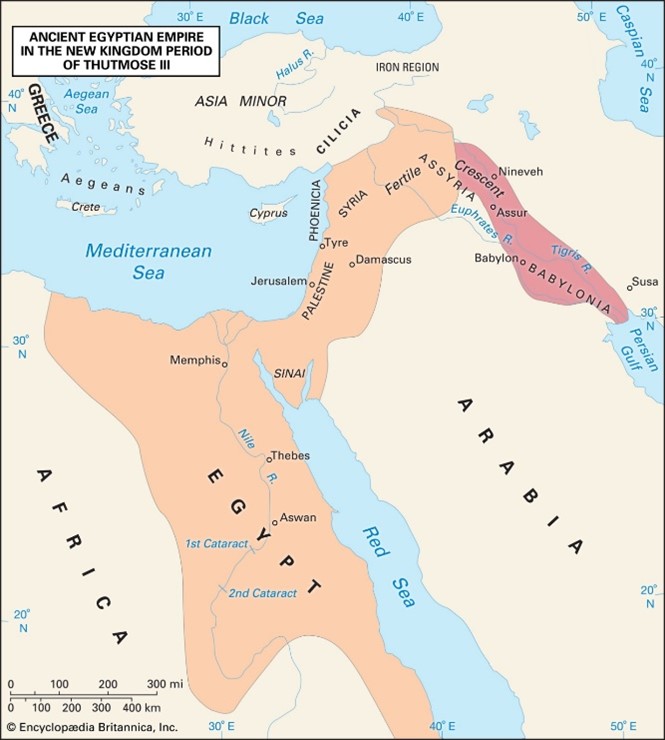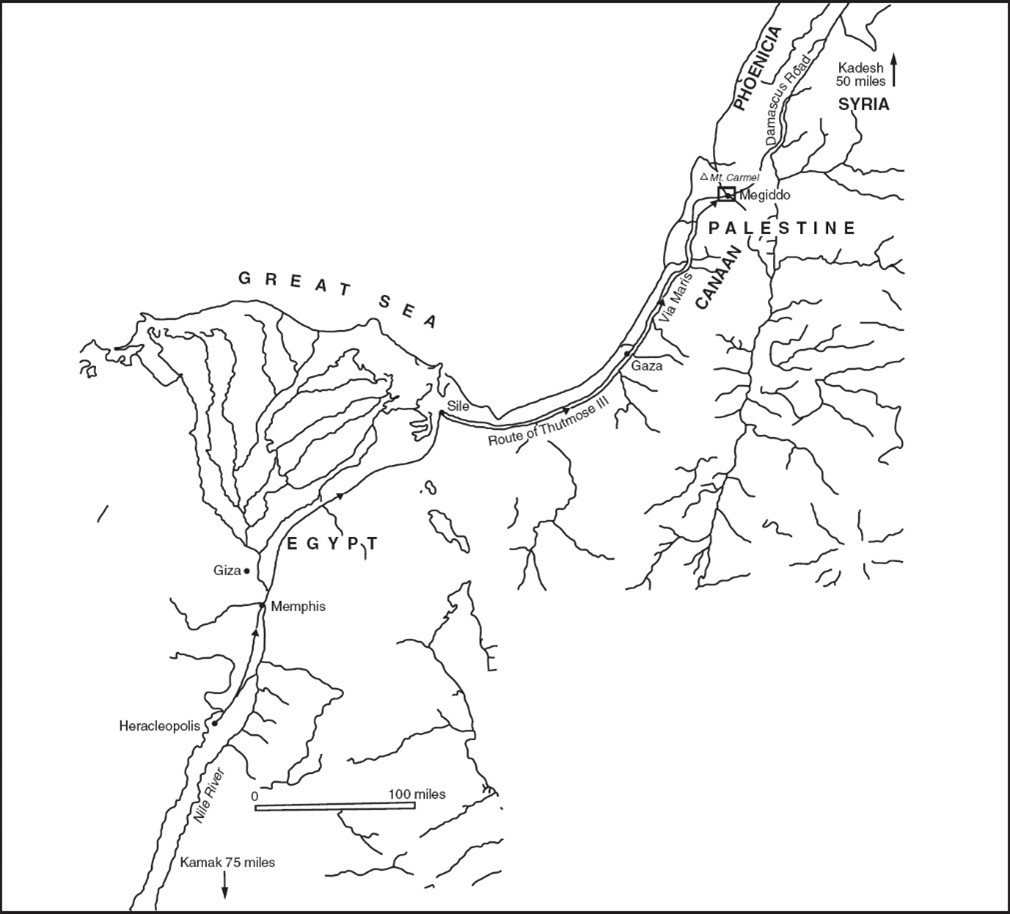Thutmose III
AbdulSamad Olagunju / December 05, 2021
6 min read
Welcome to another awesome blog post!
Quote of the Post:
"I set your glory and the fear of you in all lands, and the terror of you as far as the four supports of the sky...the rulers of all foreign countries are gathered together within thy grasp. I stretch out my hands to bind them for you." - Amon-Re to Thutmose III

Hatshepsut inherited a nation in chaos. Her husband, Thutmose II, had died an early death. There was a power vacuum, and through cunning and resilience, she was able to seize power. Through good governance, she was able to convince the Egyptian populace that she was the rightful ruler. However, the true heir of the throne was her stepson, Thutmose III. It is his life that we will discuss today.
Hatshepsut ruled Egypt for more than a decade, and Thutmose III waited to seize power until her death. His stepmother made sure he was well-educated. Thutmose was a man in love with intellectual pursuits. He was educated in the following disciplines: history, architecture, pottery, and botany. Later when he would lead campaigns into foreign countries, he would ask scribes to record unique animals and plants.
To train him for his role in military matters, Hatshepsut sent him to the army. His training was difficult, as he had to learn what it took to be combat ready. Hatshepsut also placed him in control of her armies, a decision that indicates a lot of trust between the two. Thutmose III could have very easily played the role of the usurper, but his loyalty to his stepmother preserved the stability of the Egyptian state. Thutmose III also acted as a co-ruler with Hatshepsut and gained valuable experience about the day-to-day governance of Egypt.
With all of this training in intellectual, military, and administrative matters, Egypt had a ruler that was capable of leading them to greatness. Egypt’s vassal states had stopped respecting the treaties established between the two nations, but Hatshepsut did not venture in any large military expeditions to quash this dissent. Once Hatshepsut relinquished power, it was once again time for Thutmose III to reestablish Egyptian power in this region. From the years of 1458-1425 BC, Thutmose III would embark on 17 military expeditions, putting down revolts and expanding the borders of Egypt. This and the discovery of his short stature from his mummy allowed historians to name him the “Napoleon of Egypt.”

We will begin by discussing his first battle, The Battle of Megiddo. It involved an audacious plan by Thutmose III and revealed his cunning in military matters. We will discuss the tactics, technology, and geography involved in the battle.
Firstly, it is important that I introduce many of the important military innovations that Thutmose III introduced to Egypt during his reign. He transformed the Egyptian army into a more coordinated unit. It would be bigger, with more administrative positions. New weapons would be introduced that were more effective than the typical bronze weapons of the time. There would be better logistical organization of Egyptian military campaigns, and an Egyptian navy had to be built if Egypt was to go on the offensive. Thutmose III facilitated the establishment of workshops to build weapons, ships, and chariots. All of these changes would make Egypt a dominant military power for the coming centuries.
The Battle of Megiddo
The Battle of Megiddo was of momentous importance to the development of Egypt as an empire. In this battle, Egypt would face a group of city-states in Asia that wanted to fight against Egyptian influence. Megiddo is a city of great strategic importance in the region, and at least 34 battles have been fought over it. Thutmose III remarked “The taking of Megiddo was the taking of a thousand towns.” Megiddo had a population of 3100 residents and was well fortified by steep hills and walls. The fields near Megiddo were extremely fertile, producing abundant amounts of grain. It is clear that Megiddo was an important city to conquer.
A group of warrior-people named the Mitanni were at the forefront of this Asiatic coalition. They had control over the city-state of Kadesh and dominated what is now modern-day Syria. In addition, another important group in this coalition included the Canaanites.
To invade the region, Thutmose III marched his men close to 200 miles in around twenty days. That is close to 8 marathons worth of distance! He brought 10,000 infantry and 1,000 chariots with him. Thutmose III and his army were now stopped by a mountain, and he had to figure out the best path to take so that he could set up a confrontation with his enemies. There were three roads to Megiddo. The road that Thutmose III decided to take was extremely risky, as it involved a very narrow, steep path down to Megiddo. His officers begged him not to take that route, but Thutmose III understood that his enemies would be caught off-guard by his maneuver. He was only 22 at this time, but he was bold. His boldness would pay off.

Thutmose III led his army down to Megiddo and caught his enemies by surprise. It was a 3-hour march over dangerous terrain, and Thutmose III led the way, in full sight of his army. At Megiddo, Thutmose III was able to deploy his infantry from the flanks and crush the enemy chariots in an encircling movement. He then sieged Megiddo, capturing it a month later. Egypt was now in control of Syria and Mesopotamia with this major victory. Thutmose III would continue to subdue this region, invading Lebanon, conquering Aleppo and Kadesh, and dominating the last vestiges of the Mitanni power.

Thutmose III and his military successes allowed Egypt to become the dominant power in this region. His thirst for conquest changed Egypt from an isolated, secluded nation into a highly imperialistic superpower.
Sources:
- Richard Gabriel- Thutmose III- The Military Biography of Egypt’s Greatest Warrior King
- Richard Gabriel- Great Generals of the Ancient World
- xenohistorian.faithweb.com
- britannica.com/
- newworldencyclopedia.org/